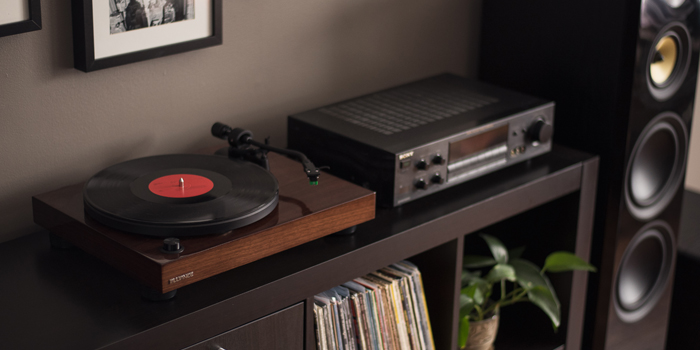
What Does Wow and Flutter Mean for Turntables?
Any turntable lover knows what wow and flutter are. If you want to maximize your music playback’s potential, you’ll need to understand the variety of
OVER 100,000 AUDIO ENTHUSIASTS SATISFIED SINCE 1999
Buy Online or Call 1-888-617-6863
Serious Performance
For those looking to dive into the world of vinyl, it can be a pretty intimidating hobby to get into. The internet is full of information and at times conflicting opinions, which can be tricky to navigate. Getting up and running listening to vinyl records is actually quite simple. We have put together this guide to get you started with turntables and identify all the components you will need to start listening to records today and enjoy that warm vinyl sound. We will also get into some nitty gritty topics to provide you with knowledge of some of the subtleties that go into achieving the maximum sound performance.
To begin listening to records you will need a few basic components. There are seemingly endless ways to upgrade your turntable gear/components and customize your listening experience.
In order to play a record, you will need a combination of the components listed above to get started. Depending on the setup you are looking to create there are several options for you to consider. Some of the components are built into each other allowing for a more compact setup. The setup you choose will largely be determined by budget, the physical space you have available, integration with other home audio components, and the type of music experience you are looking for.

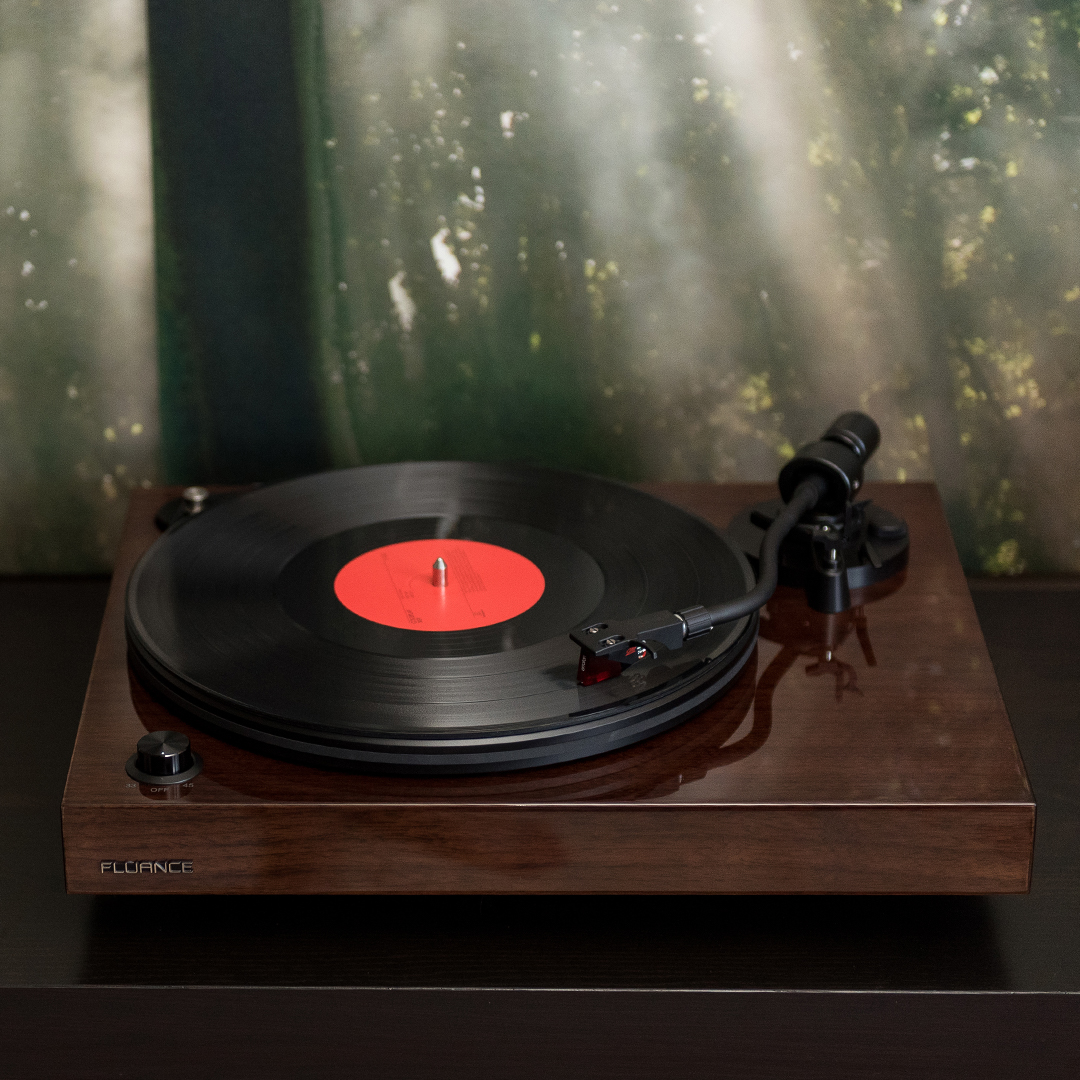
At the heart of your record playing experience is the turntable. The main job of your turntable is to spin your records at a consistent speed allowing the record grooves to be tracked by your stylus/needle and transform that information into an electrical signal. When it comes to turntable purchasing there is a vast range in pricing, which is mostly determined by components, features, build quality, and specifications.

Once your have a turntable and pre-amp you will need an amplifier to connect to the preamplifier in order to boost the signal to a line level signal. You could utilize an A/V receiver, separate amplifier, or powered speakers that have a built-in amplifier (different than pre-amp). When choosing an amplifier, you have many considerations to take into account as they range drastically in price and features. Some A/V Receivers also have a built-in pre-amp allowing you to plug your turntable directly into it without needing a separate pre-amp.
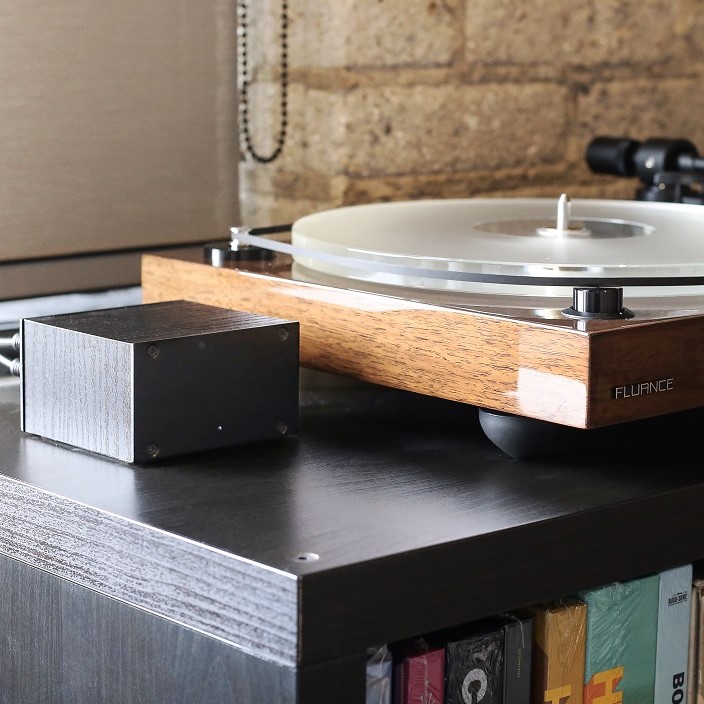
The function of a phono preamp is to boost the low voltage signal that your cartridge produces and amplify that music signal to be appropriate for your receiver/speakers. You will need a preamp as part of your turntable system in one of 4 places. 1. Built into your A/V receiver– indicated by a “PHONO” input 2. Built into your powered speakers – indicated by a “PHONO” input 3. Built into your turntable 4. A separate outboard component
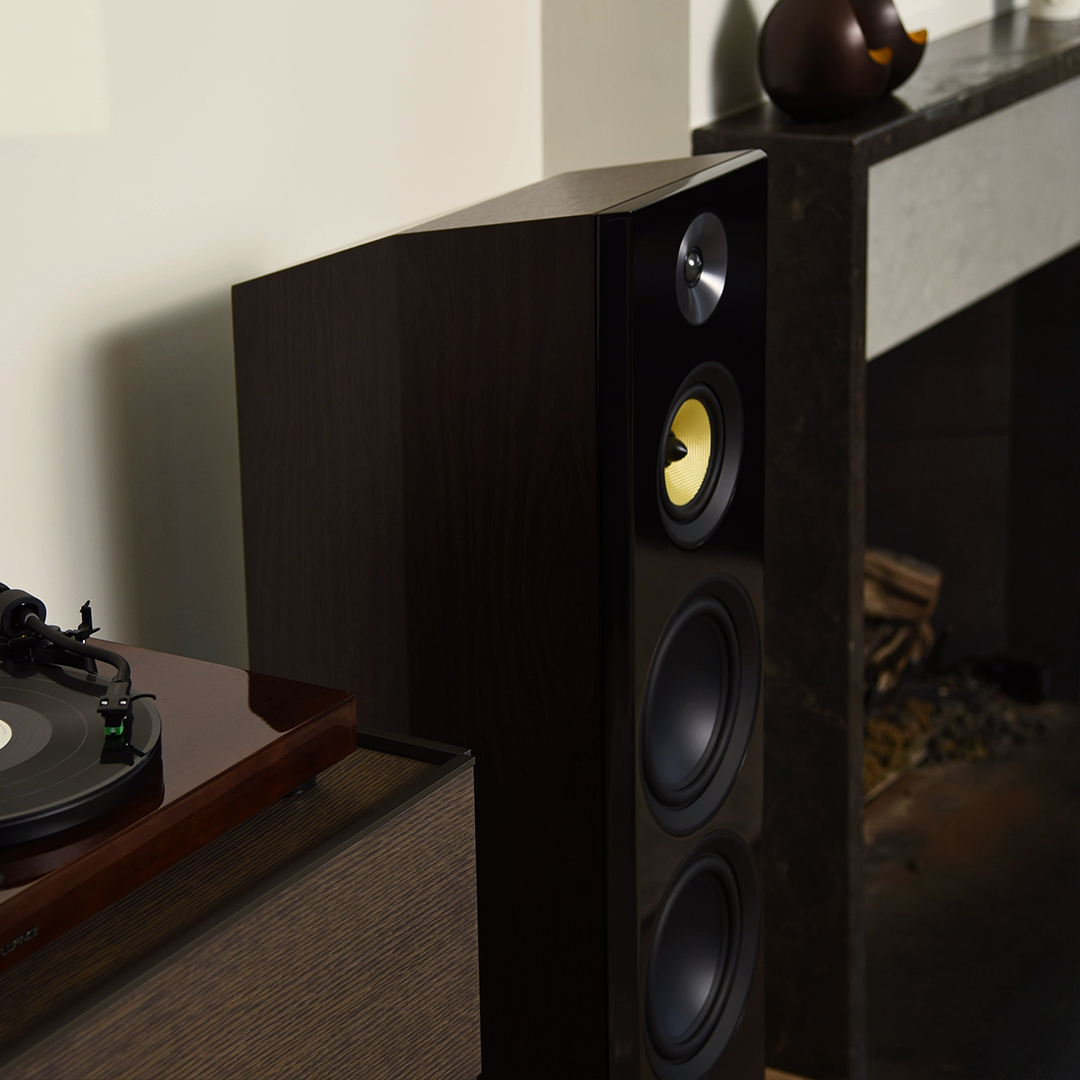
You will need some kind of speakers to play the music from your turntable. Your main choices are passive or powered speakers. Passive speakers do not have their own built-in amplifier and are powered by a separate amp such as an A/V receiver. These speakers are connected via speaker wire to the amplifier. You can also plug your turntable directly into powered/active speakers which feature a built-in amplifier. Do note that some powered speakers have a built-in amp and pre-amp, while some have just a built-in amp.
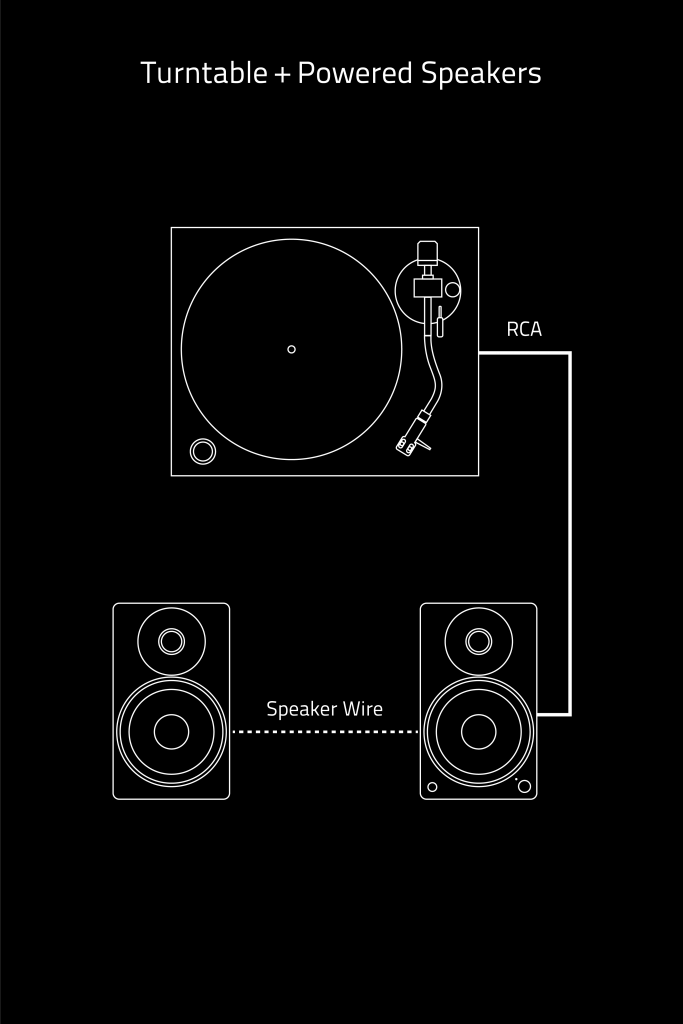
This is the most compact turntable setup. With a preamp built right into your turntable, you would simply plug your turntable into your powered speakers via an RCA cable.
The powered speakers would have its own integrated amplifier so no other components are required which is perfect for smaller spaces or if you simply want a more minimal and easy to use setup. Do note that not all turntables have built-in preamps so if you want this compact setup ensure your choice of turntable has one built-in.

This setup adds a separate preamp into the mix. This gives you flexibility for a more customized sound as well as removing more electronics from your turntable signal path allowing you to have a cleaner signal. With the separate preamp you will also need to add a grounding wire from the turntable to the preamp, and the preamp to the powered speakers to avoid any buzzing or humming noise. You can achieve this setup with turntables that do not have a built-in preamp or your turntable has a defeatable phono stage allowing you to bypass the built-in preamp
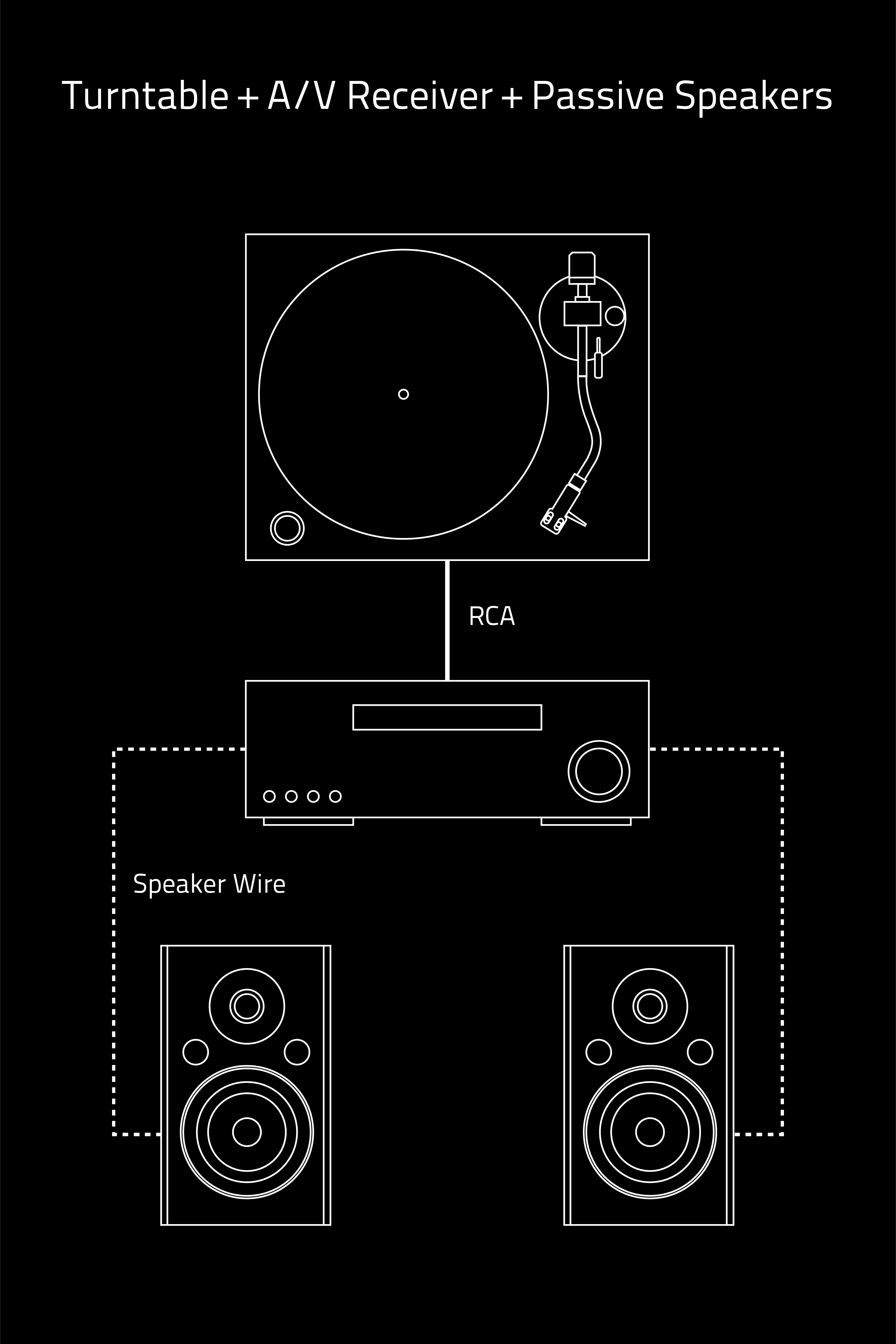
One of the most common turntable setups for vinyl enthusiasts. You would plug your turntable with built-in preamp into your receiver via an RCA cable. Your receiver would then be plugged into 2 or more speakers. This setup allows you to easily plug into an existing speaker setup that may be multi-purpose such as home theater watching or wireless music streaming. Some A/V receivers have a built-in preamp allowing you to bypass your turntable preamp, or connect a turntable without a built-in preamp to it.
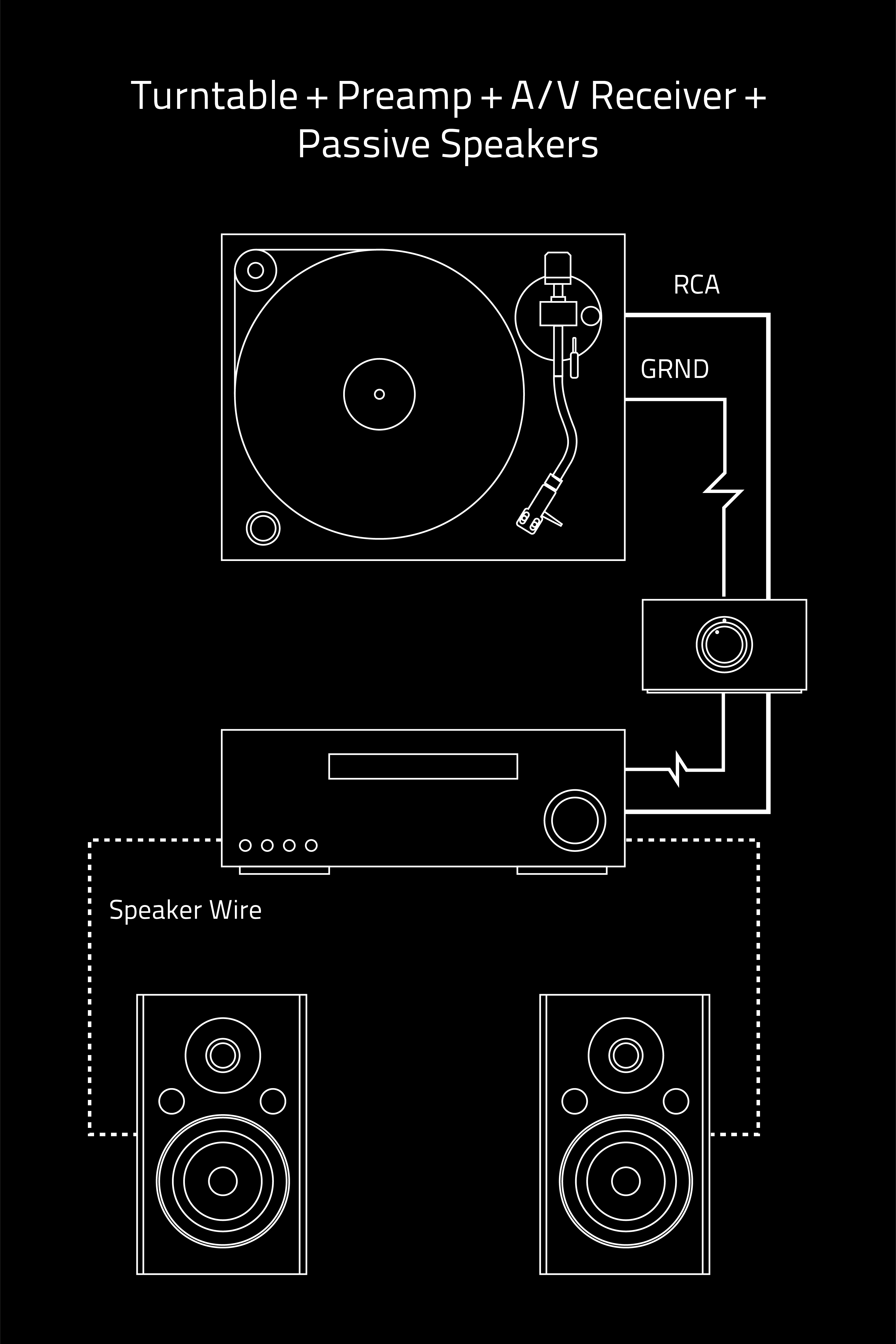
This is the most separate component-heavy of the setups . Many hardcore enthusiasts opt for this route as it allows for the most customization and upgrade-ability of their systems. Choosing this setup allows you to replace and upgrade specific components over time to get the exact sound performance desired.
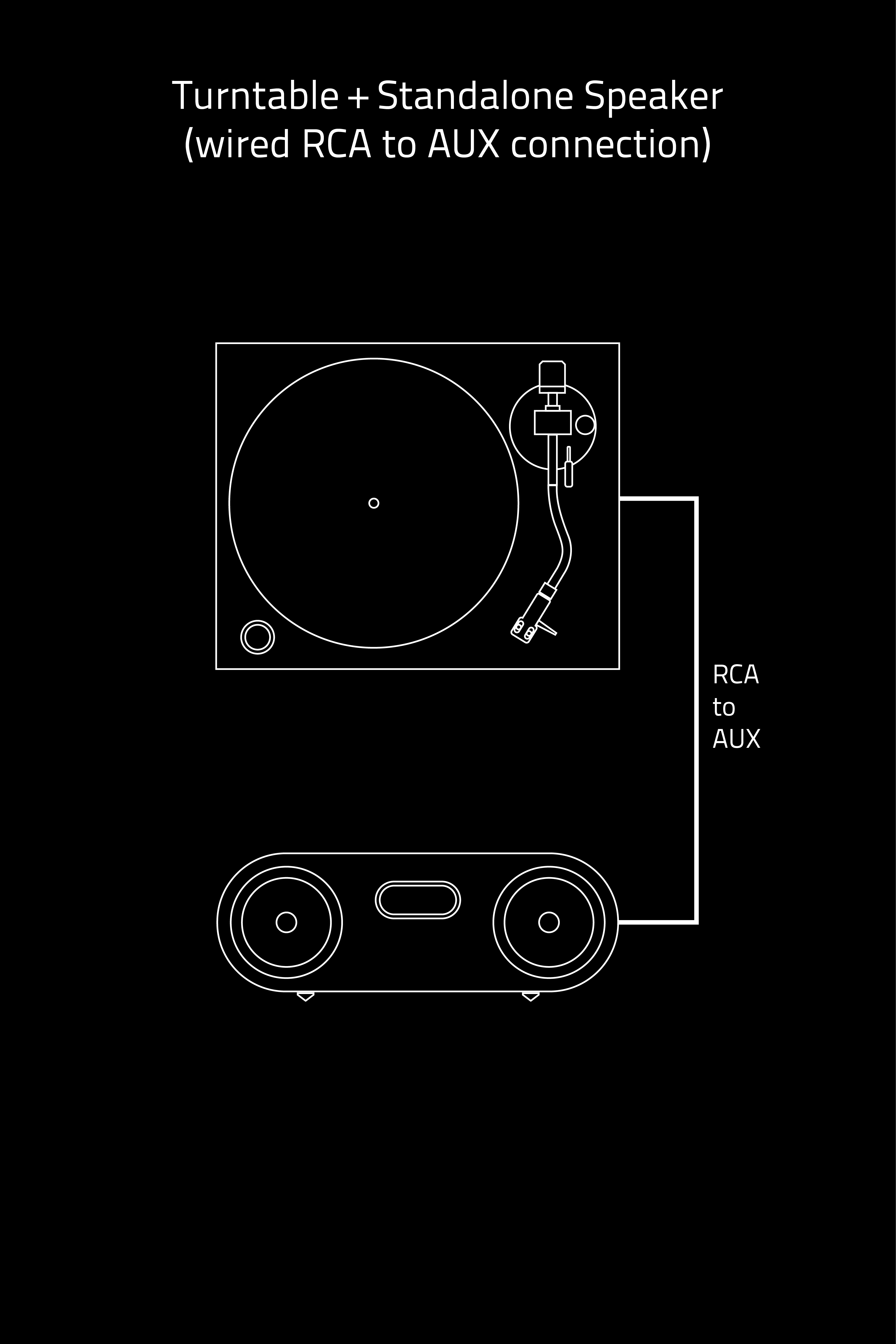
This setup is the same in principle as the turntable + powered speaker setup. The main difference here is an even more compact setup. The biggest drawback of this setup is not achieving proper stereo separation in your soundstage. For utter simplicity however some listener opt for this setup.
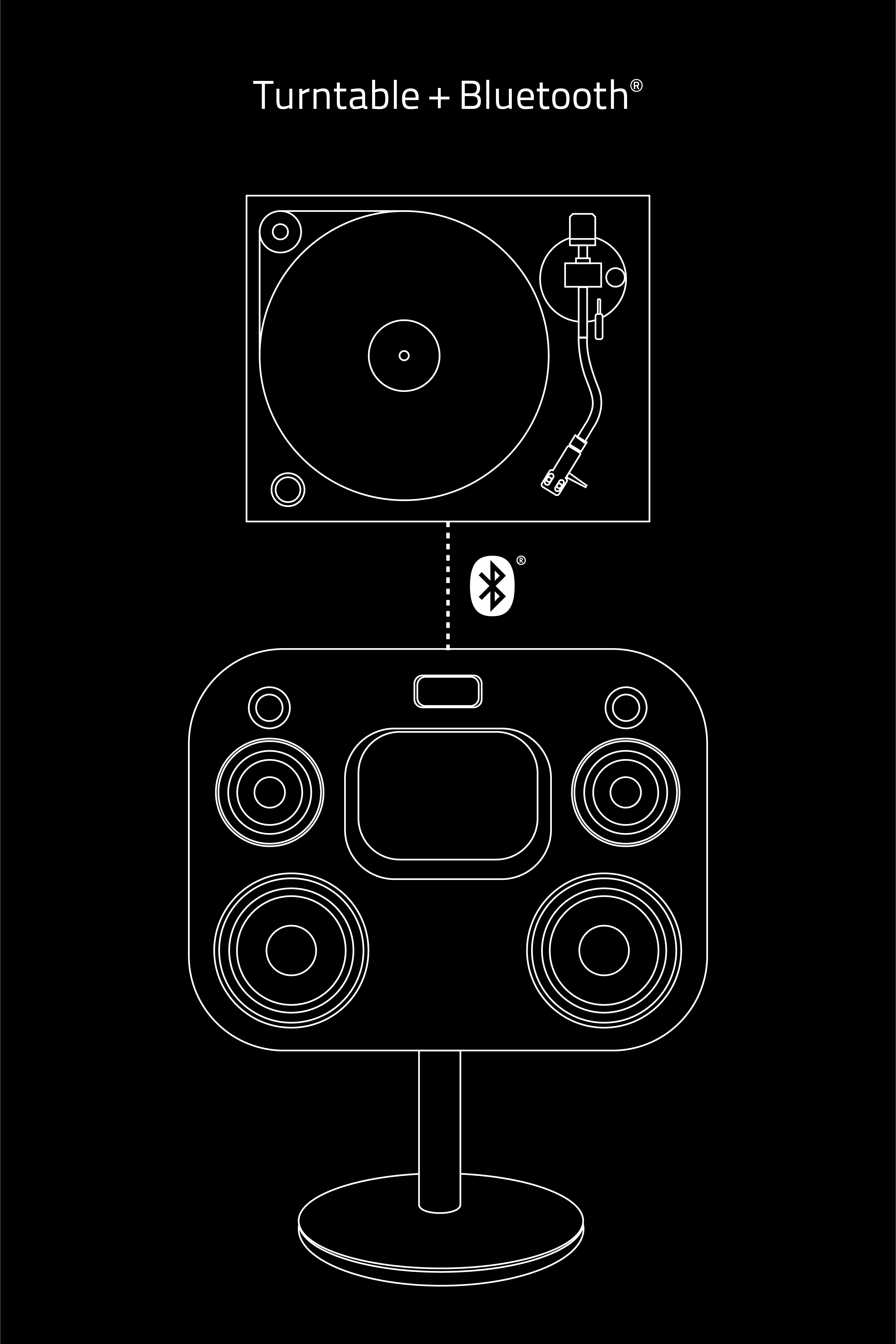
You can connect a turntable to a wireless speaker using a Bluetooth transmitter and a RCA male to 3.5mm stereo female adapter. This would mainly be done if you wanted your speakers further apart without wanting to using cables to connect them.
While possible to do, we do not recommend this type of setup. Due to wireless compression, wireless audio may not maintain the high standard of audio quality obtained from vinyl.
A record is a vinyl platter with a groove cut in a spiral pattern around its surface. The needle, or stylus, is placed at the edge of the record and is pulled into the groove as the turntable’s platter rotates. The shape of the record’s groove causes the stylus to vibrate up and down and from side to side. The turntable’s cartridge translates these physical vibrations into electrical signals that are transmitted to the phono preamp and then to preamp and amplifier.
The signal generated by the stylus is very weak. It requires additional amplification to get to what is called “Line Level”. The function of a preamp is to amplify that weak signal from the stylus into a signal strong enough to be processed by the main power amplifier and played at an appropriate level through your loud speakers. More on that later…
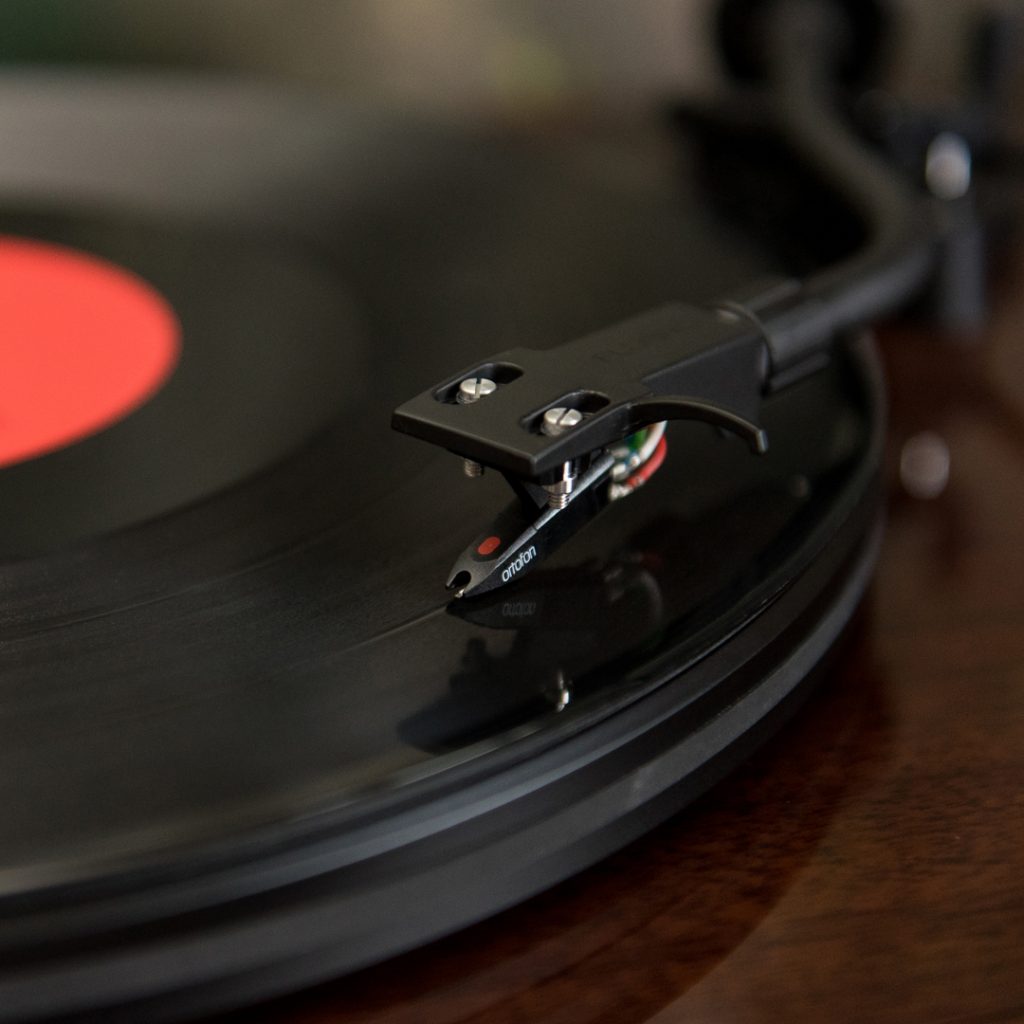
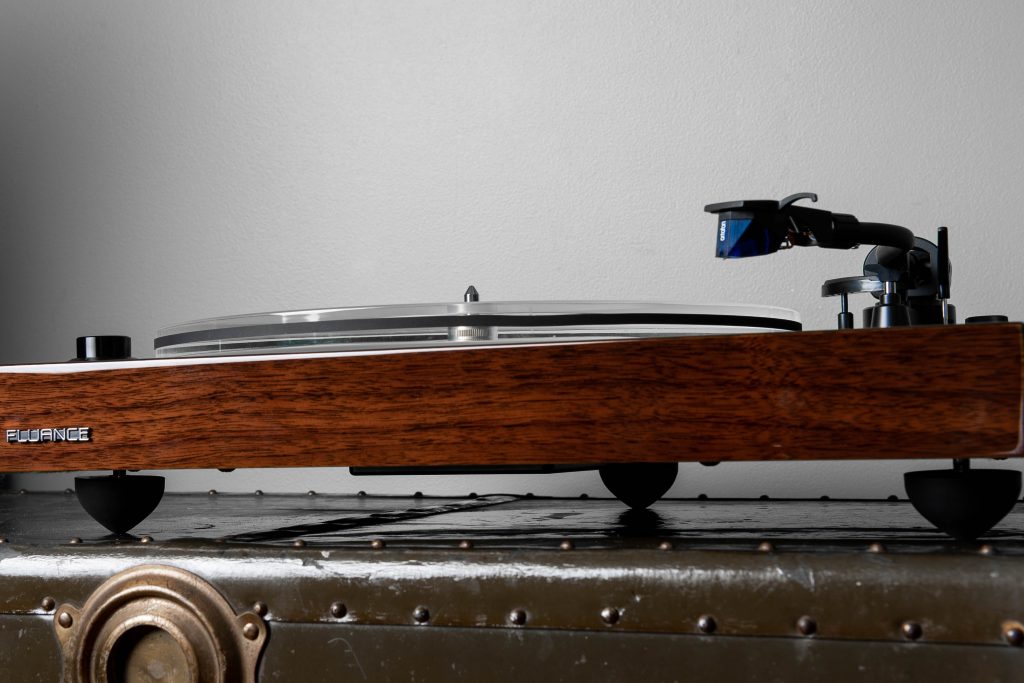
The stylus has no way of differentiating between the vibrations caused by the record groove and vibrations from external sources. This makes it necessary to isolate the turntable as much as possible from sources of outside vibration—primarily the speakers, which can affect the stylus when the volume is sufficiently high. This action can cause an unpleasant hum or howling noise. For this reason, it’s best to place the turntable at some distance from the speakers, or behind them.
When it comes to arranging your setup, you will want to avoid placing your turntable and speakers on the same surface (i.e. not on the same shelf/console). While often visually appealing and space saving it increases the likelihood of vibrations from the speakers being picked up by your stylus leading to undesirable sound performance. For this reason many enthusiasts opt for floorstanding loudspeakers or using speaker stands for bookshelf speakers.
Designers of quality turntables do their best to prevent vibrations from coming up through the turntable and the record. They use two basic approaches to address this issue:suspension and mass. The suspension approach suspends the platform, or plinth, to mechanically isolate it from the rest of the turntable as much as possible. The mass approach makes the turntable heavier to suppress the vibrations reaching the stylus. Most good turntables incorporate feet made from pointed metal spikes or soft, rubbery material to help prevent vibrations from coming up into the turntable. Aftermarket accessories, such as sorbothane feet or isolation platforms, can also help minimize vibration.
A turntable is composed of two sets of mechanically separate components. The base, motor and platter belong to one set, while the arm and cartridge belong to the other set.
Platters are often made of heavy materials like metal, acrylic or high-density fiberboard (HDF). A heavier platter may take a few seconds longer to get up to speed, but its flywheel effect will keep its speed more consistent when a record is playing.
To help the record stay put on the platter, and to reduce vibration coming through the platter, a mat is used between the platter and the record. Mats are often made from felt, cork, leather, rubber or acrylic, and these materials have slightly different effects on a turntable’s sound.
Some platters do not require the addition of a mat, such as acrylic platters which would have the vibration damping properties by default.
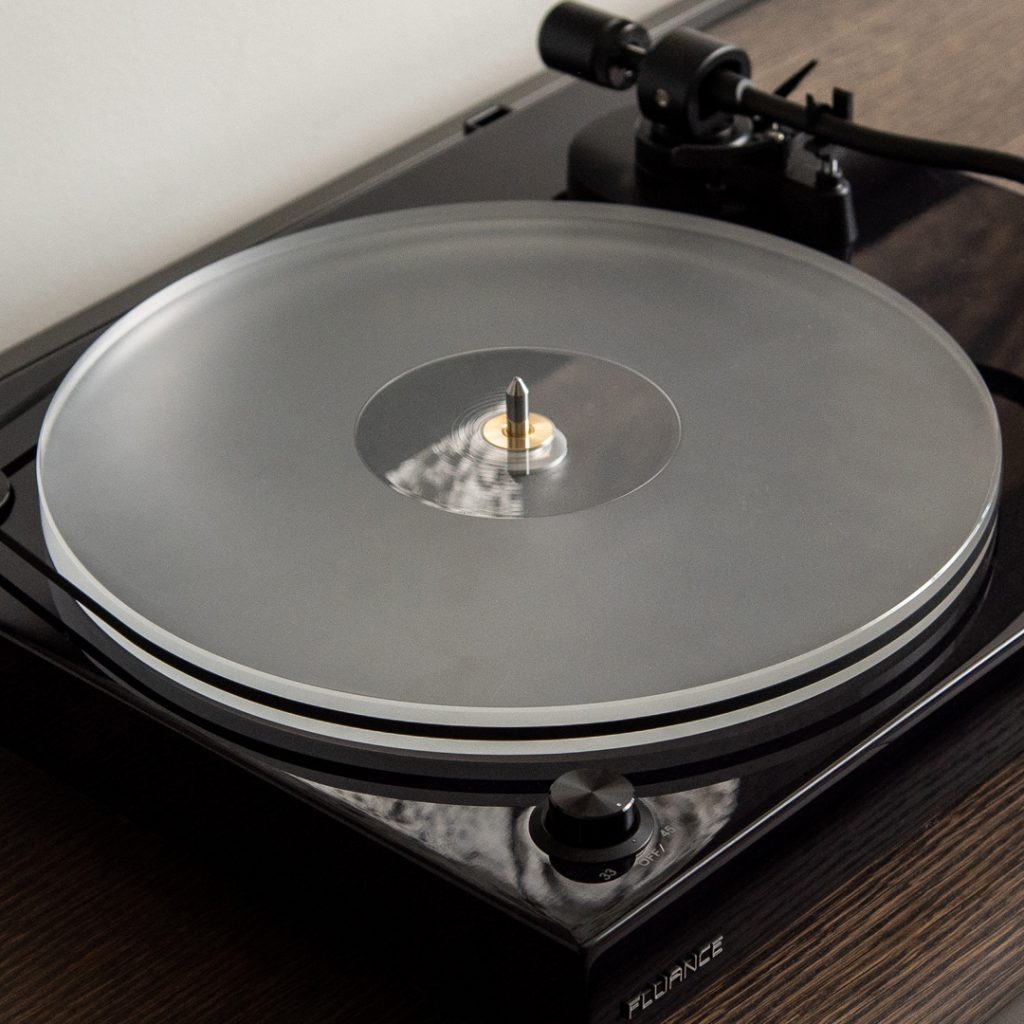

A stand is an important consideration for a turntable setup, since it isolates the turntable from the floor. It might be a dedicated turntable stand, a wall-mounted stand, the top shelf of an audio equipment rack, or simply a good, strong shelf or table. Regardless of the specific solution, the primary goal is to maximize the turntable’s mechanical isolation.
Many turntable users also take into account storage of their vinyl collection when choosing stands or consoles as well. Some consoles are made specifically for records and record players while others are appropriated into record player stands. As mentioned previously, as long as the stand works to isolate the turntable you are open to many options.
One of the most common storage solutions/stands is the Ikea Kallax unit. It offers numerous colors and sizes that make it very handy for your turntable, components and growing vinyl collection. As your equipment and collection grows you can always upgrade to dedicated stands or audio racks. When storing your records be sure that you follow proper best practices to keep your records pristine. You can learn more about that in our vinyl cleaning and storage guide.
The signal from a phono cartridge is very weak and must be amplified and equalized before it is sent to the system’s main preamp and amplifier. This can be done in a separate phono preamp, but many receivers and stereo preamps have a phono preamp built in, and a dedicated phono input. Without a phono preamp, the sound from the turntable will be very low in level, and will have way too much treble and not enough bass.
Several types of turntable cartridges exist, with moving magnet (MM) and moving-coil (MC) types being the most common. The signal from an MC cartridge is much weaker, typically 0.2 millivolts maximum, versus about 5 millivolts for a typical MM cartridge, so it requires extra amplification or a transformer to get its audio signal up to a usable level. Most separate phono preamps can handle MM and MC cartridges, but the phono preamps built into receivers and stereo preamps are often MM-only. Different cartridges sometimes work a little better with different amounts of resistance and capacitance added to the phono preamp input, and the most advanced phono preamps will let you adjust the load capacitance and resistance to suit the cartridge manufacturer’s recommendations.
Next to the phono input jacks on the phono preamp, main preamp or receiver you’ll find a screw terminal, which might be a standard screw or a thumbscrew. This is for connecting a ground wire to the turntable. The ground wire is intended to help reduce hum. Once in a while, though, the ground wire can actually increase hum, so if you have a hum problem with your turntable, try disconnecting the ground wire to see if that improves it.
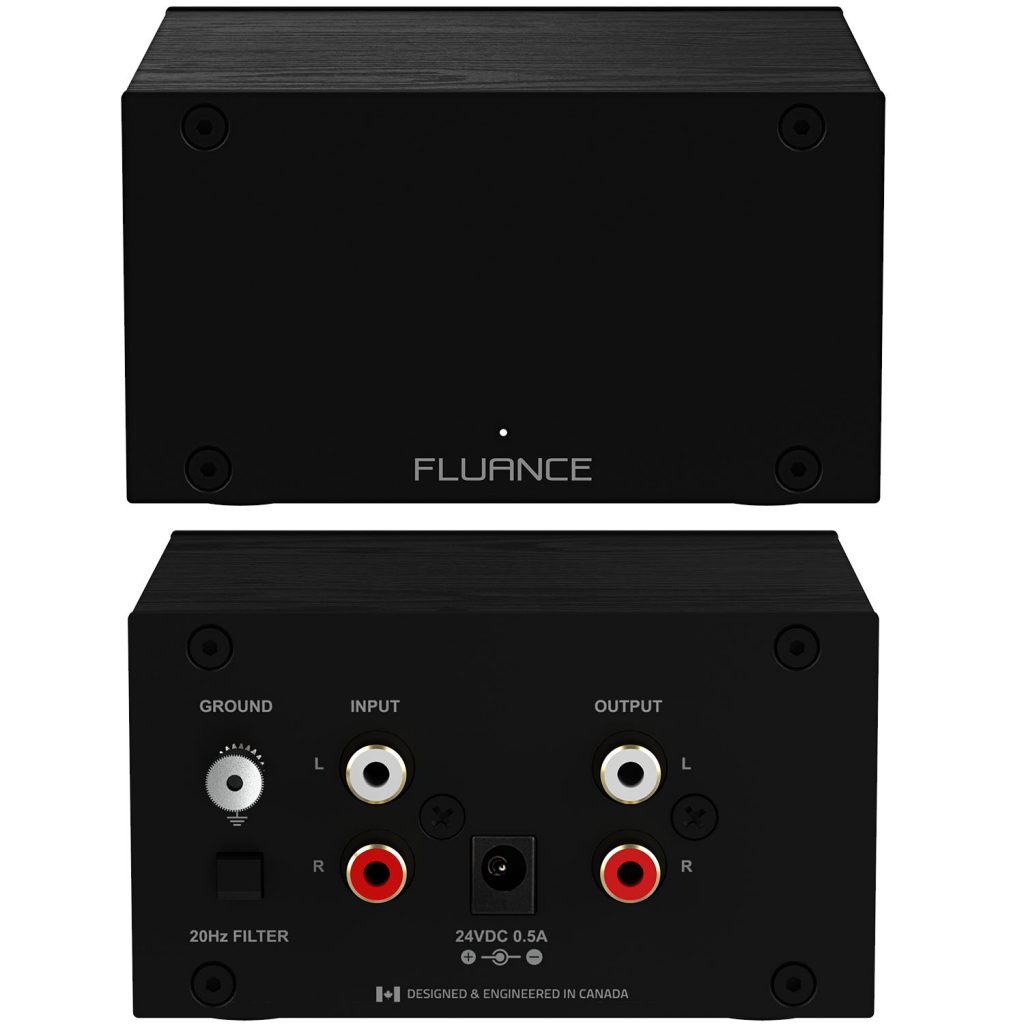
The list below may vary slightly from turntable to turntable but the majority of parts and components are represented in some way, or similar functions are achieved on most quality turntables.
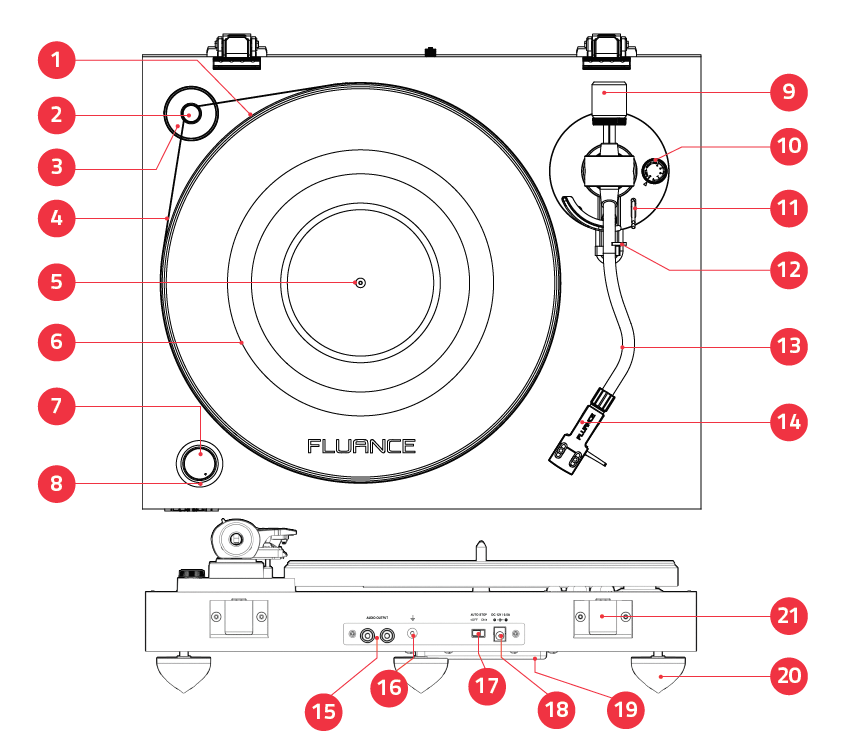
1. Platter – The surface where you place your record and is spun by the belt in order for the stylus/needle to track the record groove.
2. Motor Pulley – Will drive the belt to spin the platter.
3. Motor Pulley Cap – Protects the motor from dust and debris.
4. Rubber Belt – Connects the Motor Pulley and Platter to drive the platter at a consistent speed .
5. Spindle – A protruding rod attached to the bearing that the platter sits on that also keeps your records in place.
6. Turntable Mat – A protective surface to isolate your records from platter vibrations while also protecting your records from scratching. Can be made of various materials each with unique properties and benefits to playback.
7. Speed Selection/On Button – Knob to change speeds from 33 1/3 to 45 RPM. Different models of turntables have different methods for selecting rotational speed.
8. Power LED – Indicates if power is on.
9. Counterweight – Adjustable weight that allows you to balance your tonearm specifically to your selected cartridge.
10. Anti-Skating Control – Adjustable knob allowing you to select an anti-skating measurement to prevent you records from being pulled toward the center of your platter too aggressively during playback avoiding skipping or distortion.
11. Cueing Lever – Allows you to raise and lower your headshell onto your records with more precision preventing unwanted wear or damage to your records.
12. Tonearm Lock – Fastener allowing you to lock your tonearm in place preventing it from moving when your turntable is not in use.
13. Tonearm – A pivoting metal arm that supports the cartridge and allows it to hang over the record and track the record groove as it spins toward the center of the record.
14. Headshell & Stylus – The cartridge containing your stylus is what generates an electrical signal from the tracking of a records grooves. The cartridge is precision mounted and aligned to the headshell so it can accurately track record grooves while the tonearm is moving during record spinning.
15. RCA Audio Outputs – Analog audio connection port allowing you to wire your turntable to your speakers or amplifier.
16. Ground Terminal – A metal post allowing you to connect a grounding wire to your amplifier to prevent undesirable noise/humming caused by static electricity or ground loops.
17. Auto Stop Switch – Allows you to turn the auto stop function on and off. With the auto stop switch enabled the record will stop spinning after a few rotations after it has finished playing a side of a record. If auto stop is disabled the record will spin continuously until the user lifts the headshell off the turntable.
18. Power Input – Input for power cable.
19. Motor Servo – Speed control device using comparator circuit to maintain and correct turntable speed. Different turntables may use different technologies/methods to accomplish consistent speed.
20. Isolation Feet – Allows for damping of environmental vibrations preventing those vibrations from reaching the plinth.
21. Hinge – Allows you to open and close your dust cover.

Any turntable lover knows what wow and flutter are. If you want to maximize your music playback’s potential, you’ll need to understand the variety of

Music might be the mainstay of a vinyl’s worth, but music enthusiasts love a solid vinyl cover. For some the cover art is almost as important as the music itself.
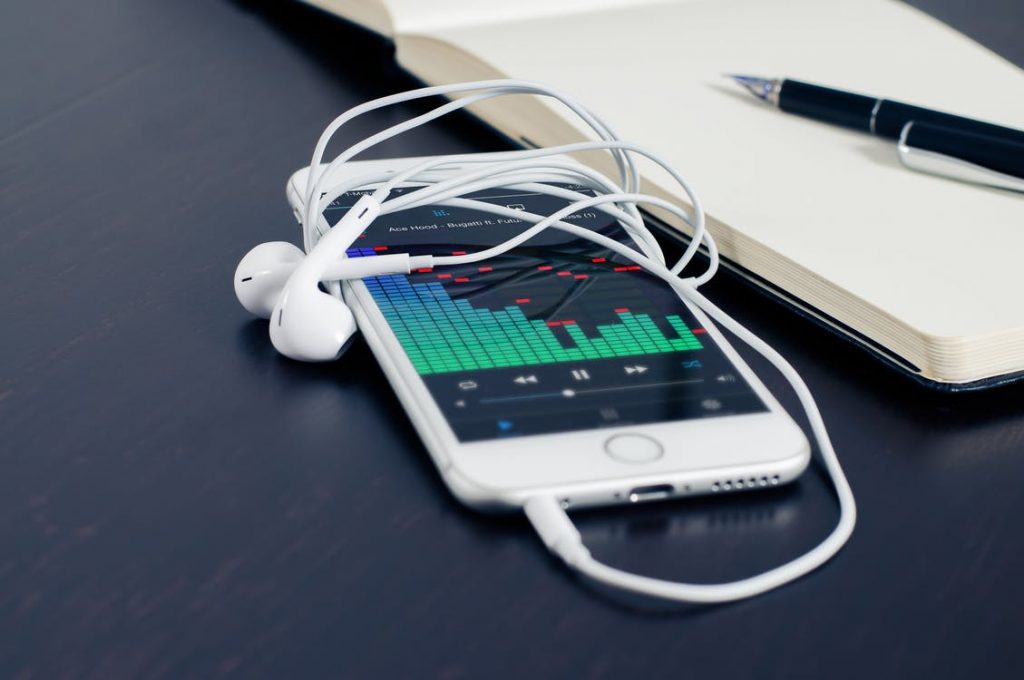
Both digital and analog music have their benefits. Even now, music connoisseurs discuss the topic endlessly. Understanding both recording methods can advance your appreciation of music, giving you a deeper understanding of playback depth.
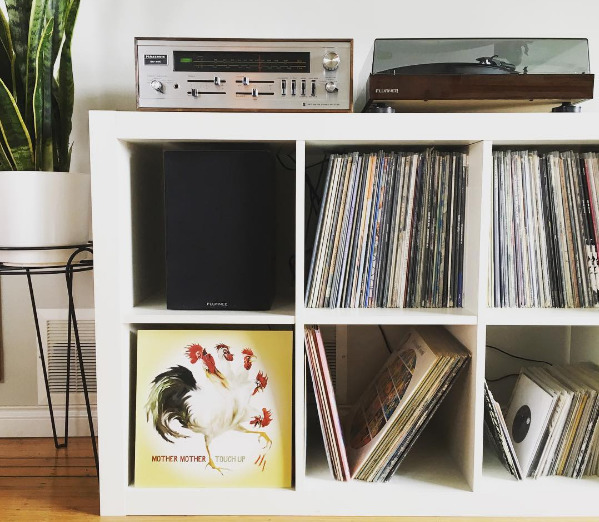
Taking care of your vinyl is critical to the long term enjoyment of your record collection. Check out our few tips to help keep your records scratch-free, clean, and vibrant for years to come.
It’s important to maintain the needle, or stylus, on your turntable for the best possible performance and enjoyment of your records. It can be tricky to know exactly when to switch it out. We highlight some signs of stylus wear and some maintenance tips.
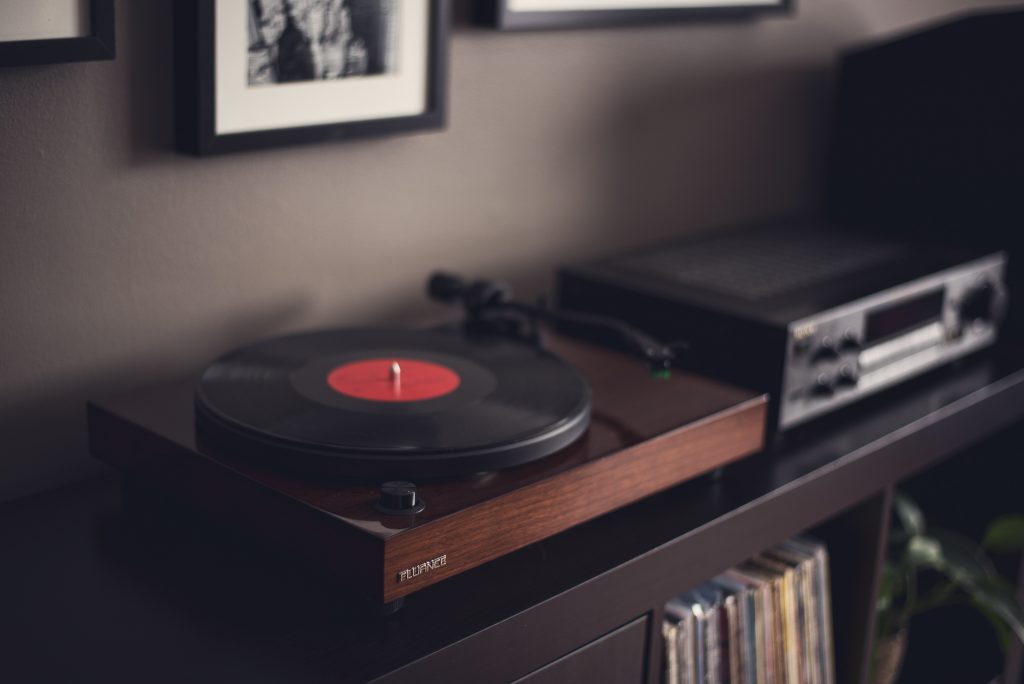
You’ve probably heard it before: Vinyl records sound “better” or “warmer” than CDs and digital songs. Today’s consumers collect records for this very reason. But what gives vinyl that warmer characteristic?